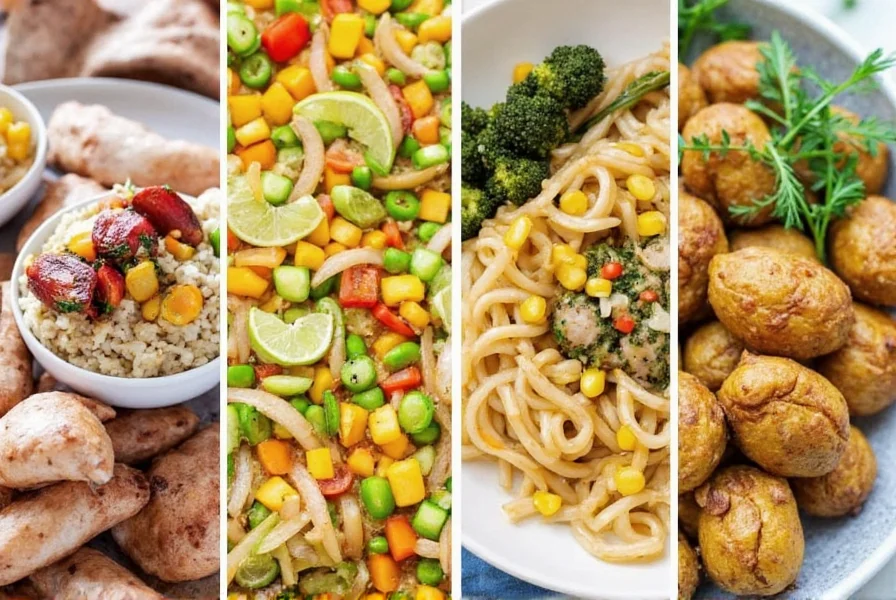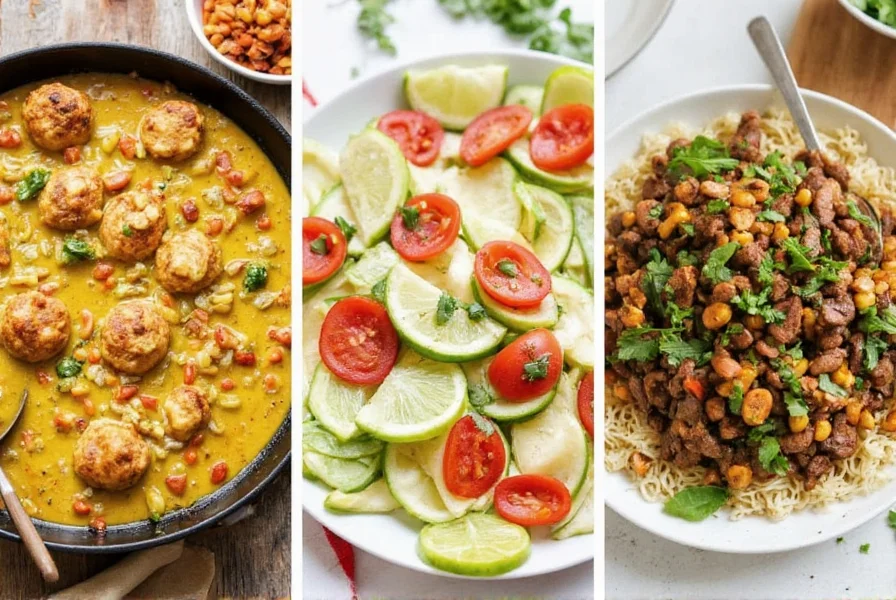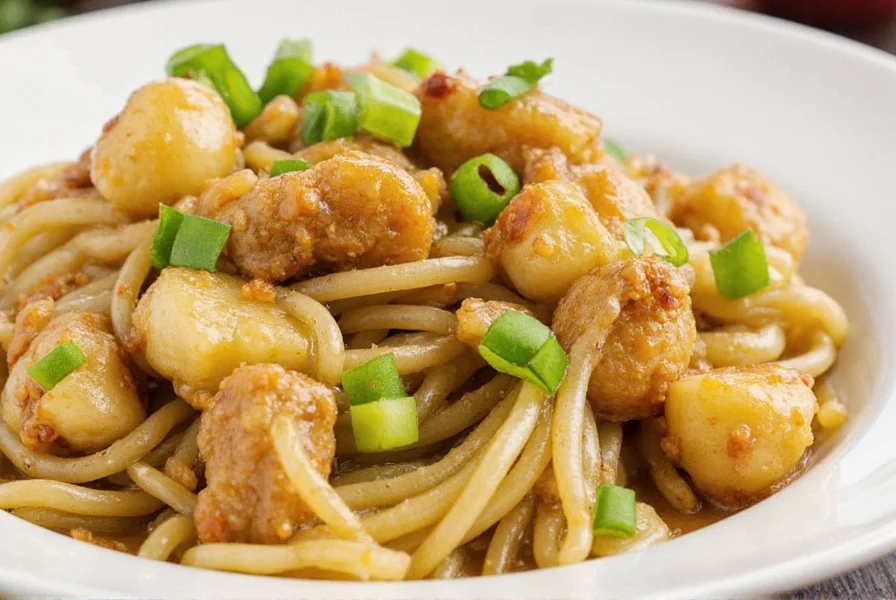Renowned for its distinctive spicy-sweet warmth, ginger has been enhancing global cuisines for millennia. This versatile root adds depth to both savory and sweet dishes while offering notable digestive benefits. Whether you're working with fresh, dried, or crystallized ginger, understanding how to maximize its potential can elevate your cooking significantly.
Why Ginger Deserves a Permanent Spot in Your Kitchen
Ginger's culinary versatility stems from its complex flavor compounds that evolve during cooking. Fresh ginger provides bright, citrusy notes ideal for marinades and dressings, while cooked ginger develops warmer, earthier tones perfect for stews and braises. The active compound gingerol delivers both distinctive flavor and studied health benefits, particularly for digestion and inflammation reduction.
Essential Ginger Preparation Techniques
Proper preparation maximizes ginger's flavor potential:
| Preparation Method | Best For | Flavor Profile |
|---|---|---|
| Finely grated | Marinades, dressings, baked goods | Bright, intense, evenly distributed |
| Thinly sliced | Teas, stir-fries, braises | Gradual flavor release, visible pieces |
| Minced | Sauces, soups, meat mixtures | Balanced intensity, integrates well |
| Crystallized | Desserts, garnishes, snacking | Sweet-spicy, chewy texture |
Peeling ginger requires minimal effort—simply scrape the skin with a spoon's edge rather than a peeler to preserve more flesh. Store unpeeled ginger in an airtight container in the refrigerator for up to three weeks, or freeze whole for extended use.
15 Exceptional Ginger Recipes for Every Occasion
1. Ginger-Soy Glazed Salmon with Bok Choy
This quick ginger salmon recipe combines fresh ginger's zing with umami-rich soy for a restaurant-quality meal ready in 20 minutes. The ginger marinade tenderizes the fish while adding complex flavor without overpowering.
Ingredients:
- 2 salmon fillets (6 oz each)
- 3 tbsp soy sauce (low sodium)
- 1 tbsp rice vinegar
- 1.5 tbsp freshly grated ginger
- 2 cloves garlic, minced
- 1 tsp honey
- 1 tbsp sesame oil
- 2 cups baby bok choy
Instructions:
- Whisk together soy sauce, vinegar, ginger, garlic, honey, and sesame oil
- Marinate salmon for 15 minutes at room temperature
- Heat skillet over medium-high, add salmon skin-side down
- Cook 5-6 minutes until skin crisps, flip and cook 3-4 minutes more
- Sauté bok choy in remaining marinade until tender-crisp
- Serve salmon over bok choy with extra glaze

2. Authentic Thai Tom Kha Gai (Coconut Ginger Soup)
This traditional Thai ginger soup recipe balances creamy coconut milk with aromatic galangal (or ginger substitute) for a comforting yet refreshing broth. The ginger cuts through richness while enhancing other flavors.
3. Fresh Ginger Carrot Cake with Cream Cheese Frosting
A moist ginger carrot cake recipe that showcases freshly grated ginger's sweet-spicy warmth. The ginger complements carrots' natural sweetness while adding complexity missing in powdered ginger versions.
4. Ginger Turmeric Immunity Shots
These simple ginger immunity shots combine fresh ginger, turmeric, lemon, and a touch of honey for a potent morning tonic. The ginger provides the signature kick while aiding absorption of other ingredients.
5. Ginger Miso Ramen with Soft-Boiled Eggs
An easy ginger miso ramen recipe that transforms store-bought broth with fresh ginger, miso paste, and aromatics. The ginger cuts through richness while adding depth to the umami broth.
Maximizing Ginger's Flavor Potential
The timing of ginger addition dramatically affects final flavor. For bright, citrusy notes, add ginger near the end of cooking. For deeper, warmer flavors, sauté ginger with aromatics at the beginning. When making ginger tea, simmering longer extracts more gingerol while shorter steeping preserves brighter notes.
For homemade ginger recipes requiring preserved ginger, try pickling thin slices in rice vinegar with sugar and salt—a versatile condiment that keeps for months. Crystallized ginger makes excellent baking additions and provides convenient portioning for recipes requiring precise measurements.
Storing Ginger for Maximum Freshness
Whole, unpeeled ginger root lasts 2-3 weeks refrigerated in an airtight container. For longer storage, freeze whole or sliced ginger—frozen ginger grates beautifully without thawing. Peeled ginger submerged in sherry or vodka keeps for months while infusing the liquid with ginger flavor, perfect for ginger-infused cocktail recipes.
When selecting ginger, look for firm, smooth roots with tight skin and minimal wrinkles. Avoid pieces with soft spots or mold. Larger "hands" often contain more usable flesh than smaller, knobby pieces.
Exploring Global Ginger Traditions
Ginger appears in culinary traditions worldwide: Chinese cuisine uses it with garlic and scallions as a flavor base; Indian cooking incorporates dried ginger powder in spice blends; Caribbean recipes feature it in jerk seasonings; and Middle Eastern dishes use it in meat rubs and sweets. Understanding these cultural applications expands your creative ginger recipe ideas beyond conventional uses.

Conclusion: Embrace Ginger's Culinary Versatility
From morning tonics to evening entrees, ginger offers unparalleled versatility in the kitchen. These practical ginger cooking recipes demonstrate how this humble root can transform ordinary ingredients into extraordinary dishes. Start with one recipe that matches your current craving, then experiment with ginger's many forms to discover your personal favorites. The more you work with fresh ginger, the more you'll appreciate its ability to elevate both familiar and new recipes.
What's the difference between fresh ginger and ground ginger in recipes?
Fresh ginger provides brighter, more complex flavor with citrus notes, while ground ginger offers warmer, more concentrated spice. Substitute 1 tablespoon fresh grated ginger with 1/4 teaspoon ground ginger, but note that fresh ginger works better in raw applications while ground ginger excels in baked goods.
How can I reduce the strong taste of ginger in a dish?
To mellow ginger's intensity, add it earlier in cooking to allow flavors to mellow, balance with sweetness (honey, sugar), or incorporate dairy (coconut milk, yogurt). For soups and stews, adding a small amount of acid (lemon juice, vinegar) can also help balance strong ginger flavors.
Can I substitute galangal for ginger in recipes?
Galangal has a sharper, more peppery flavor than ginger with distinct citrus notes. While you can substitute in Thai recipes (use equal amounts), it won't work well in Western dishes expecting ginger's sweeter profile. For most ginger recipe substitutions, fresh ginger remains the better choice unless specifically making Thai cuisine.
How do I prevent ginger from burning when sautéing?
Ginger burns easily due to its sugar content. To prevent this, use medium-low heat, add ginger after onions/garlic have softened slightly, and stir constantly. Adding a splash of liquid (water, broth, or wine) immediately after adding ginger creates steam that prevents scorching while releasing flavor.
What are the best recipes for using up leftover ginger?
Transform leftover ginger into ginger simple syrup for cocktails, pickle thin slices for sandwich condiments, freeze grated portions for smoothies, or make ginger-infused oil for dressings. Small amounts work well in morning smoothies, salad dressings, or stirred into oatmeal for added warmth.
Frequently Asked Questions
What's the difference between fresh ginger and ground ginger in recipes?
Fresh ginger provides brighter, more complex flavor with citrus notes, while ground ginger offers warmer, more concentrated spice. Substitute 1 tablespoon fresh grated ginger with 1/4 teaspoon ground ginger, but note that fresh ginger works better in raw applications while ground ginger excels in baked goods.
How can I reduce the strong taste of ginger in a dish?
To mellow ginger's intensity, add it earlier in cooking to allow flavors to mellow, balance with sweetness (honey, sugar), or incorporate dairy (coconut milk, yogurt). For soups and stews, adding a small amount of acid (lemon juice, vinegar) can also help balance strong ginger flavors.
Can I substitute galangal for ginger in recipes?
Galangal has a sharper, more peppery flavor than ginger with distinct citrus notes. While you can substitute in Thai recipes (use equal amounts), it won't work well in Western dishes expecting ginger's sweeter profile. For most ginger recipe substitutions, fresh ginger remains the better choice unless specifically making Thai cuisine.
How do I prevent ginger from burning when sautéing?
Ginger burns easily due to its sugar content. To prevent this, use medium-low heat, add ginger after onions/garlic have softened slightly, and stir constantly. Adding a splash of liquid (water, broth, or wine) immediately after adding ginger creates steam that prevents scorching while releasing flavor.
What are the best recipes for using up leftover ginger?
Transform leftover ginger into ginger simple syrup for cocktails, pickle thin slices for sandwich condiments, freeze grated portions for smoothies, or make ginger-infused oil for dressings. Small amounts work well in morning smoothies, salad dressings, or stirred into oatmeal for added warmth.











 浙公网安备
33010002000092号
浙公网安备
33010002000092号 浙B2-20120091-4
浙B2-20120091-4